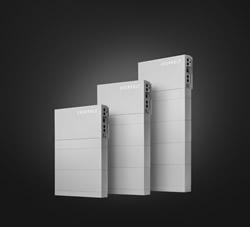Power generation will grow to record levels in 2021
A study carried out to +100 diverse industry experts evidenced their confidence on the fact that solar power generation will expand to record levels in 2021. This will be led by countries with supportive government policies and investment strategies while in conjunction with digitalization and innovation.
Madrid, 17th March 2021. In the turmoil of 2020, there was an unexpected surge in renewable energy growth with wind and solar power generation rising to record levels. This rapid expansion is set to continue with the International Energy Agency (IEA) projecting a realistic 10% increase in renewable capacity additions to almost 218GW.
To gain further insight into the status of the industry and the key trends for this year and beyond, RatedPower turned to +100 experts from energy companies of all sizes from around the world, and carried out a comprehensive survey that includes their views on the challenges and prospects ahead. Additionally, the report examines data from 1,884.1GW RatedPower's PV simulations and analyzes what it shows about the status of the sector.
In summary, the report ("Renewable Energy and Solar Research Report: What's in Store for 2021") showed that the industry had already recovered from COVID-19 disruptions in the fourth quarter, with the size of solar installations jumping by the end of the year. Industry professionals confirmed that the pandemic had not changed how their companies are investing in renewables and around 86% of the survey respondents strongly believe digitalization plays a substantial role in the development of renewables. Moreover, 96% of responses believe that technology solutions will help them achieve their objectives.
Survey findings
1. Industry challenges: Government policy is the biggest challenge in the coming years, with 50% of responses citing a lack of incentives and well-targeted public investments to support renewable installations.
2. Countries potential: Highest growth potential is perceived in US and China, according to +60% of responses, closely followed by India and Spain, both with 52%, and Australia, voted by 40%.
3. Technologies with highest potential: Solar power has the greatest potential to be successfully implemented across the globe by 2030 with 80% of respondents expecting it to realistically reach the goal of a record 130GW of new capacity this year. Respondents also said that hydrogen (44%) has the potential to rival wind energy (43%).
4. Perception of keys to success: Diversification of renewable energy technologies is the most important factor, according to 74% of responses followed closely by investing in digitalization and automation (67%) and new materials (59%).
Predictions and trends for 2021
1. Technological development: Digitalization will be the basis of new practices and technologies in the solar sector.
2. Resource optimization: Existing trend towards maximizing efficiency of renewable installations and keeping down costs with solutions such as bifacial panels, thin-film PV, AI tools or battery storage.
3. Energy transition investment: Governments, companies, and households have invested a record sum on low-carbon technologies in 2020 (9% increase from 2019) and the trend is expected to continue in 2021.
4. Corporate project financing: Growing importance of environmental, social, and corporate governance is prompting companies to promote carbon emissions reduction.
5. Hydrogen development: Green hydrogen has been identified as a high-growth area for the coming years with projects expected to more than double in 2021.
6. Battery storage models: "Module price and cost of battery are going to decide the pace of growth." - Manohar Das - Head of Engineering, ib vogt
Supply chain diversification: Diversifying supply chains to avoid equipment shortages.
RatedPower: a deep dive into the data
pvDesign was used to simulate a total of 1,884.1GW of solar capacity around the world in 2020, and project simulations reflect technology trends.
1. The average size of the installations grew in the fourth quarter to 107.5MW, from an average of 75.1MW during the first quarter.
2. An average of 62% of the simulations were based on installations with a central inverter although it varied greatly by country. While in Australia, 92.7% used a central inverter configuration, in Germany 89% used string inverters.
3. Fewer simulations planned to use solar tracking systems by the end of the year although they remained the majority (62%). Again, while in Germany, 96% preferred fixed structures, in Australia 91% of simulations used tracker systems.
4. Shift towards installations using bifacial PV panels (38.5% in the fourth quarter).
The survey quite clearly reveals that renewable energy experts are confident that solar power generation will expand to record levels in 2021. Countries with the greatest potential for renewable growth are those that have supportive government policies and investment strategies. And, digitalization, incentivization, innovation, and diversification will be key for the development of the renewable sector going forward.
Featured Product

